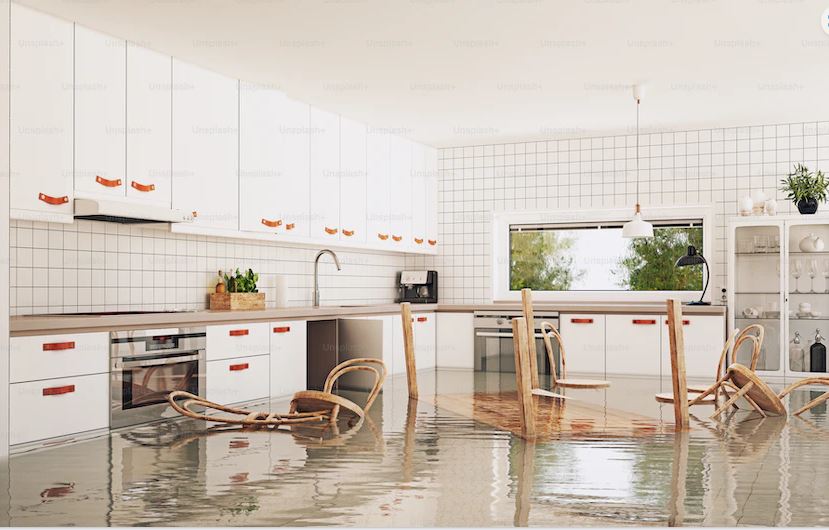Top 10 Tips for Drying Out Your Home after Water Damage
Restoring Your Space Safely and Effectively: Water damage can wreak havoc on your home, leading to structural issues, mold growth, and the potential loss of personal belongings.
Drying out your home after water damage is crucial to prevent further damage and restore a safe living environment.
This article will provide you with ten essential tips for effectively drying out your home. Whether you’re facing water damage from a burst pipe, flooding, or any other source, these tips will help you navigate the restoration process successfully. If the damage is extensive or you require professional assistance, contacting an Oregon disaster restoration company is recommended.
1. Remove Water to Prevent Contamination:
Removing any standing water is the first step in drying out your home. Use buckets, mops, or a wet/dry vacuum to extract water from affected areas. If the water is extensive, consider renting or hiring professional-grade water extraction equipment to expedite the process. Promptly removing water prevents further damage and helps minimize the risk of contamination.
2. Air Out Your Home:
Proper ventilation is essential to facilitate the drying process. Open windows and doors to allow fresh air to circulate throughout the affected areas. Utilize fans and portable air movers to enhance airflow and promote faster drying. However, be cautious if the outside humidity is high or if it is raining, as this may impede the drying process.
3. Save Your Belongings:
Act quickly to salvage and protect your personal belongings. Remove wet items from affected areas and place them in a well-ventilated space. Prioritize drying out items with sentimental or monetary value. Consult professional restoration services to assess and restore damaged belongings, such as furniture, documents, or electronics, if necessary.
4. Clean Your Walls:
Water damage can leave stains and promote mold growth and mildew on walls. Clean the walls with a mild detergent and warm water solution to remove any visible dirt or residue. If mold is present, consult a professional mold remediation specialist to ensure proper removal.
5. Use Fans:
Strategically place fans in the affected areas to promote air circulation and speed up drying. Point the fans toward wet surfaces, such as carpets, walls, or furniture, to maximize their effectiveness. Consider using a box, pedestal, or air movers for targeted and efficient drying.
6. Use Dehumidifiers:
Dehumidifiers are powerful tools for removing excess moisture from the air, reducing humidity levels, and accelerating the drying process. Place dehumidifiers in damp areas or spaces with poor airflow. Monitor the humidity levels using a hygrometer and adjust the dehumidifier settings accordingly.
7. Clean Carpets:
Water-soaked carpets can quickly become breeding grounds for mold and bacteria. Extract as much water as possible using a wet/dry vacuum, and then consider steam cleaning or professional carpet cleaning services. Thoroughly dry the carpets before returning furniture or other items to the area.
8. Be Cautious with Chemical Cleaning Solutions:
Exercise caution when using chemical cleaning solutions on water-damaged surfaces. Some chemicals may be harmful or exacerbate the damage. Consult with professionals or refer to manufacturer guidelines for appropriate cleaning solutions and procedures.
9. Add a Fresh Coat of Paint:
In some cases, water damage may require repainting affected walls. Before applying a fresh coat of paint, ensure the walls are thoroughly dry to prevent trapping moisture. Use mold-resistant paint to inhibit mold growth and restore the aesthetic appeal of your space.
10. Seek Professional Assistance:
For extensive or severe water damage, seeking professional assistance from an Oregon disaster restoration company is crucial. Certified professionals have the expertise, equipment, and knowledge to handle complex restoration projects safely and efficiently.
They can assess the extent of the damage, provide a comprehensive restoration plan, and ensure the effective drying and restoration of your home.
Conclusion:
Drying out your home after water damage is a critical step in the restoration process. Following these ten tips, you can effectively mitigate water damage, prevent further issues, and restore your home to a safe and habitable condition.
If the damage is extensive or you need clarification on the restoration process, consulting an Oregon disaster restoration company is highly recommended. Their expertise and professional services will ensure a thorough and successful restoration, providing peace of mind and a restored living environment.





Thank you for providing us with the pros and cons of concrete. This is a very useful and informative article.